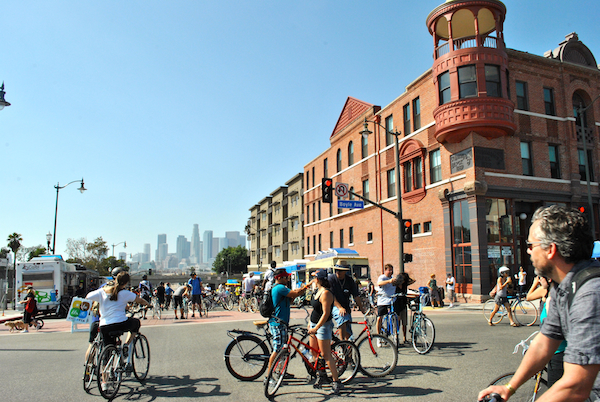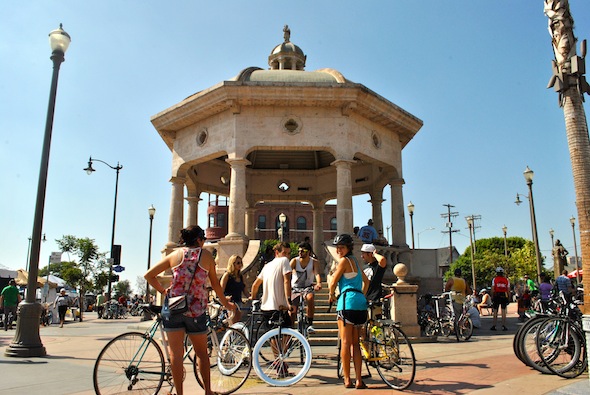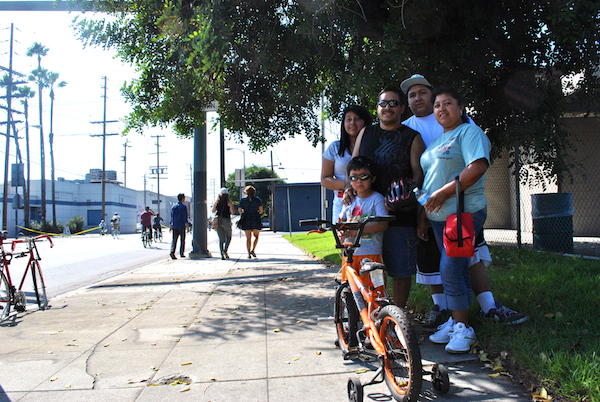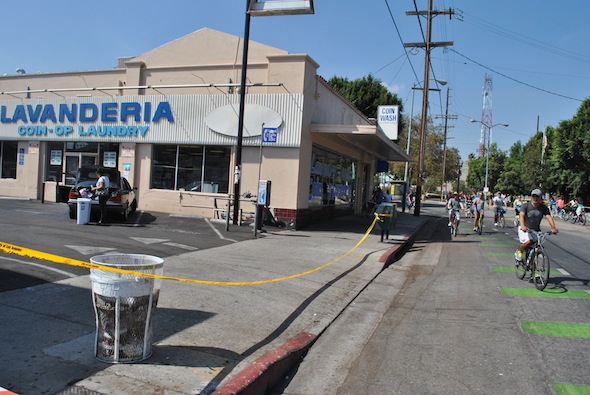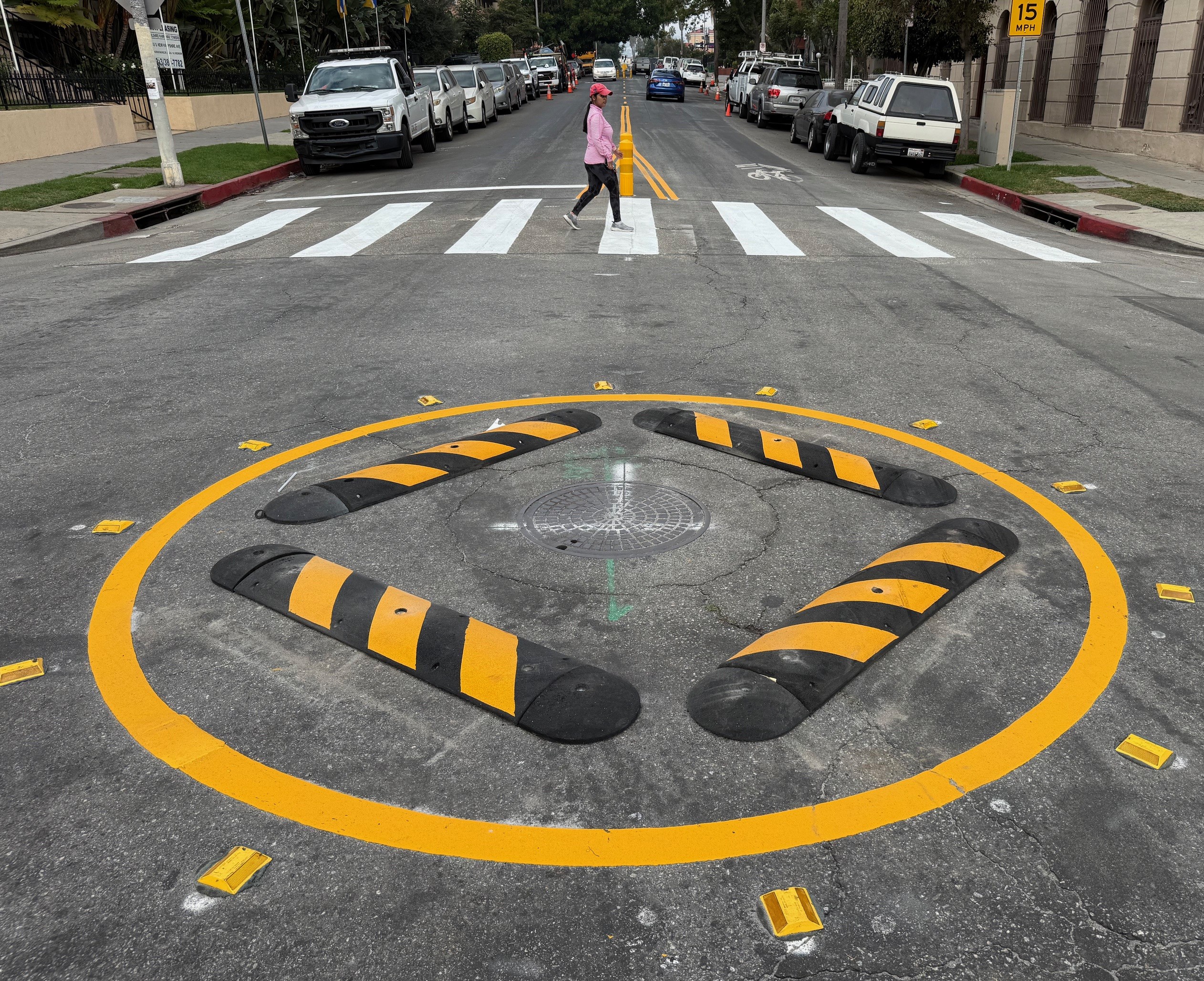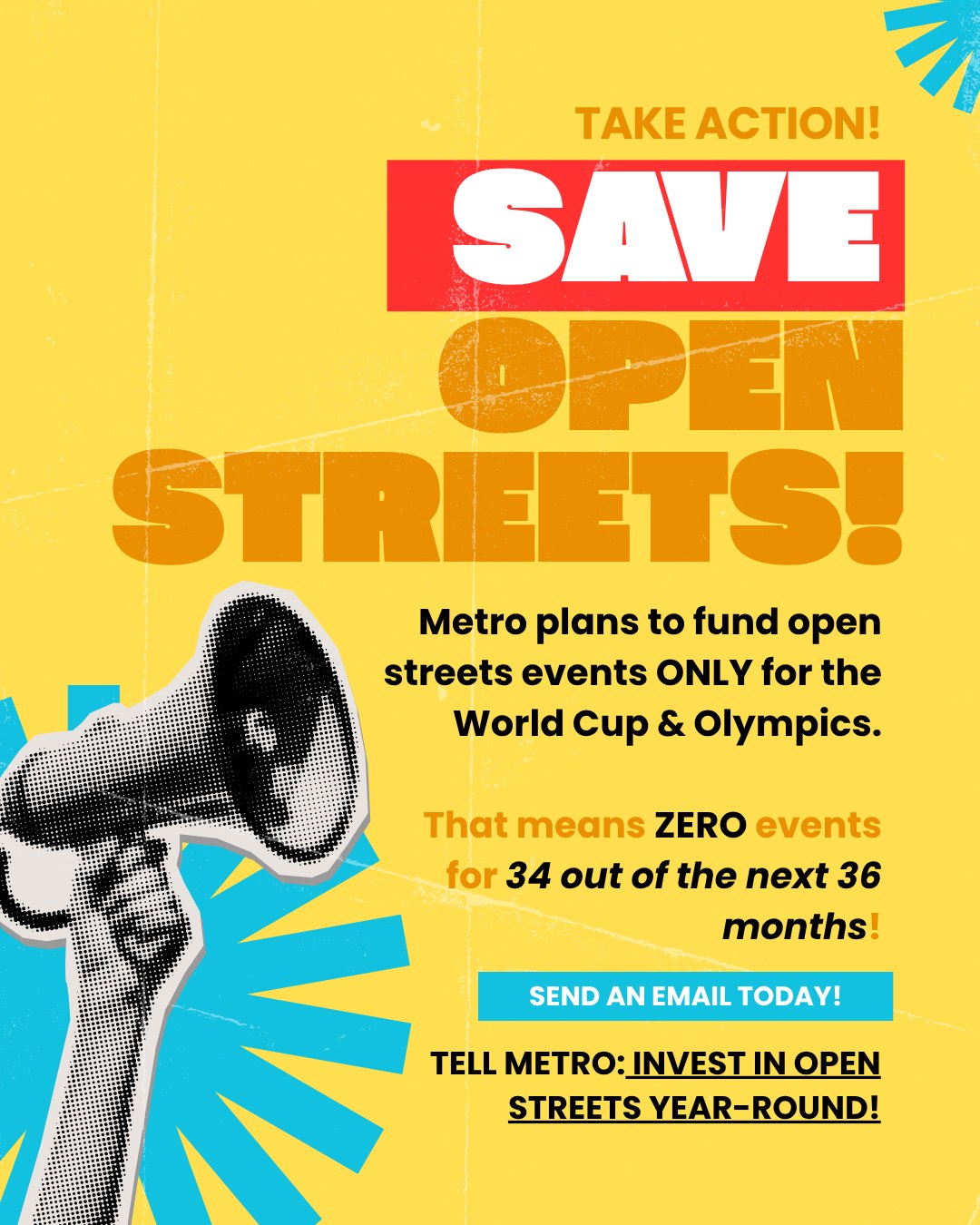Passersby on the CicLAvia Eastside route on Sunday could have gone away seeing either a vibrant party, a vacant corridor, or both. But what passersby wouldn’t have seen were the automobiles towed during the road closures for the car-free event.
Fourteen cars were towed between First and Fourth Streets on Boyle Avenue, said Jonathan Hui, spokesman for Los Angeles Department of Transportation. The cost to return an impounded standard vehicle can be $114.50 for the first hour, with $57.50 for each additional half-hour.
“It leaves me more with questions than why can't they be parked there,” said Laura Torres, a Boyle Heights resident who lives on the section of Boyle Avenue that was closed during CicLAvia.
For Boyle Avenue residents that had time to move their car for CicLAvia, motorists would have had a difficult time looking for a free space nearby. Torres said that parking is already tight on that stretch of road, and in the past, she has parked four blocks away from her home when she couldn’t find parking on Boyle Avenue.
While she doesn’t mind moving her car for CicLAvia, Torres said, she worries that residents could develop negative feelings toward the car-free event. “I hope more intention can be made to have this dialogue instead of this bad taste in their mouth.”
At Mariachi Plaza, the weekly International Market was filled with new clientele. Restaurants between Boyle Avenue and State Street were being filled to the brim. At Libros Schmibros Lending Library and Used Bookstore, co-founder David Kippen said that business was doing better on Sunday than it had been the past two weeks.
"If we had days like these, we would have more donors," said Kippen.
At Un Solo Sol restaurant, Erin Holt, a Silver Lake resident, was eating a corn tamale with plantains and black beans. She has only been to Boyle Heights a handful of times, but she said that she liked how the route came to Mariachi Plaza because it was the site of a Gold Line station.
“I like the idea of more people knowing about mariachi (plaza),” said Holt. “I love driving by and seeing the mariachis hanging out.”
Art vendors selling paintings and knickknacks hugged next to community groups like Para Los Niños and Building Healthy Communities, Boyle Heights. Down the block, Primera Taza had Dj Alter spinning live music, and across the street Espacio 1839 was selling shirts with images of a Mayan inspired bicyclist.
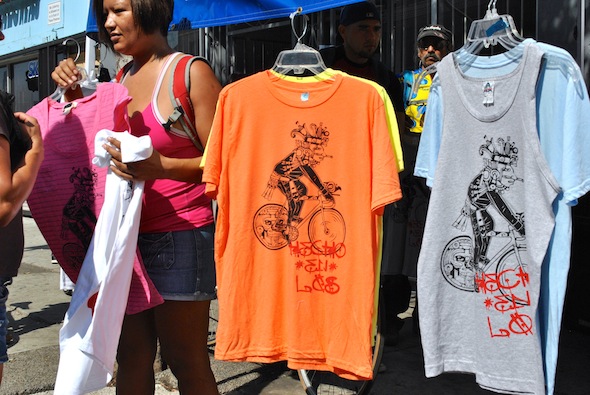
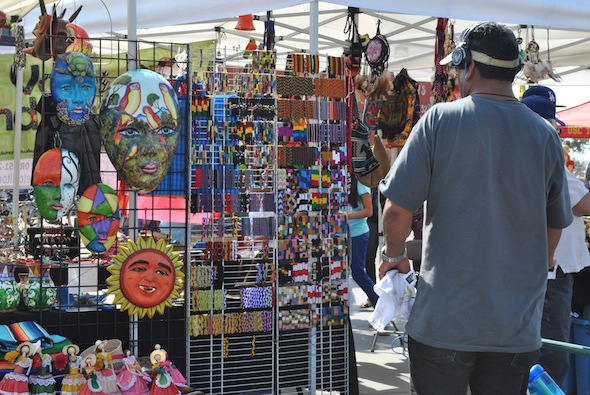
Down on Fourth Street, families were walking the route, or watching traffic pass by. Josefina Ibañez, a resident at Pico-Gardens Public Housing Complex, walked from her home, over the Fourth Street Bridge, and to Little Tokyo. She walked with her granddaughter who was on bicycle. Ibañez, who is diabetic, said that while she doesn’t walk long distances, she saw how her blood sugar that was high during the day was balanced after her walk with her granddaughter.
Back at First and State Streets, the Ovarian-Psycos Bicycle Brigade sold their wares and managed traffic on State and First Streets, with members taking turns selling their merchandise and pumping up riders passing by. Monica Perez, an Ova member, was spreading bubbles through the air as cyclists stopped at their intersection.

Heading to the Soto Hub from State Street, the feel of the route changed dramatically. Community arts centers like Corazon del Pueblo and Casa 0101 remained closed, while the biggest crowds milled around Al & Bea’s Mexican Food. Most business were either closed or absent on sidewalks, leaving the route barren and empty. Sidewalks and intersections were taped off for large stretches, and especially in front of some business.

Virginia Mendoza, 76, owner of Vicky's restaurant said that her business didn’t make any extra money from the new traffic. Bicyclists would go into her store for soda or water, she said, but they didn’t stay to eat. “If they are going so fast (on bicycle), they won't stop to buy anything,” said Mendoza.
Some spontaneous vending happened as well right on sidewalks, with people selling water and food on Boyle Avenue.
Yet, one orange juice street vendor who was selling at Soto Station Hub had barely sold anything he said. “Only a couple of the whole oranges, a cup, but (they bought) almost nothing).
Some of the best moments, though, happened when people picked out a shaded spot on the sidewalk and watched people pass by. Sitting underneath shade cast by the Boyle Heights Technology Center on 4th Street, Patricia Saucedo sat with her two sons and her friend Lupe Nuñez. Saucedo said she and her children have sat on the sidewalk in previous CicLAvias as a way to see something out of the ordinary.
“We see strange things, how they are dressed, the types of bicycles,” said Saucedo.
